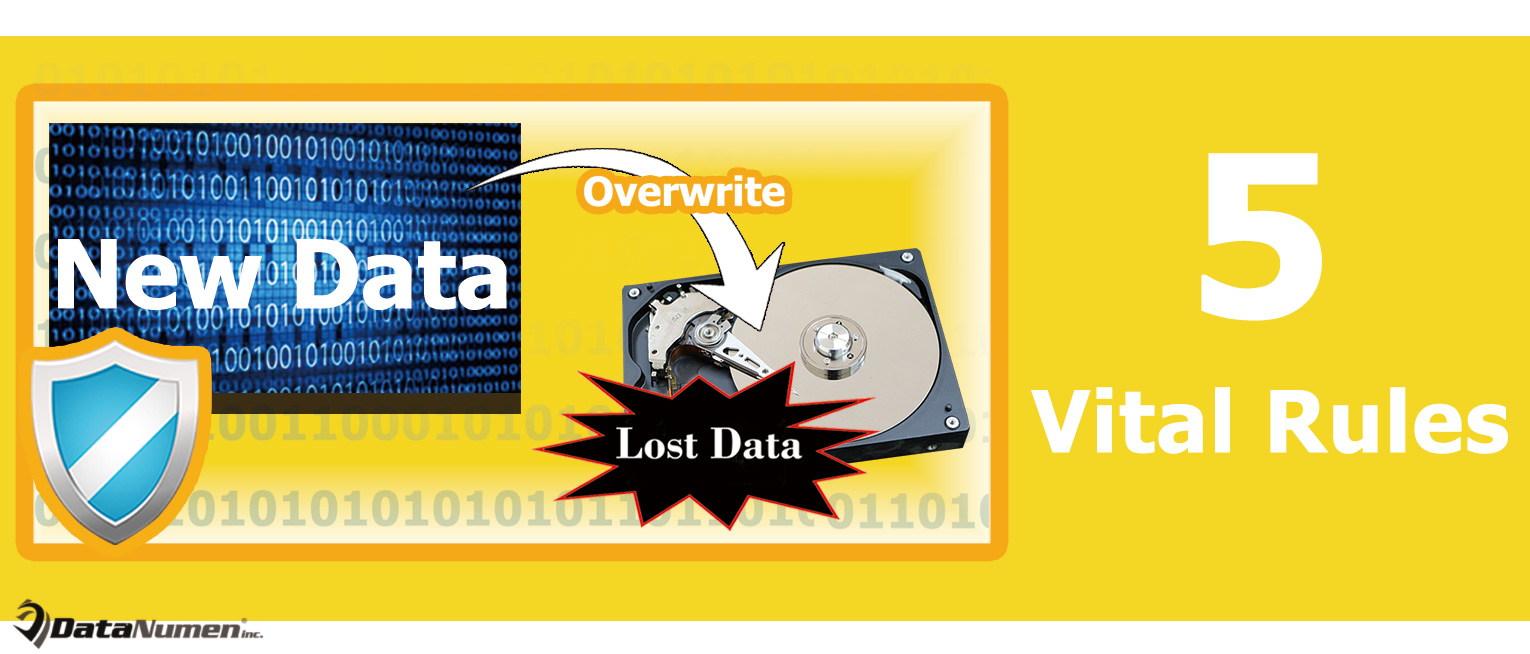When you find data is lost, actually, most of time, the data is not erased completely. It will still be over there until new data is written over it. Thus, in this course, you should follow the 5 vital rules listed in this article to prevent overwriting lost data.
As we all know, data loss can occur from multiple factors, such as mistaken data deletion, wrong disk formatting, lost partition, file corruption like PST corruption, physical device damage and so on. As a matter of fact, virtually, more often than not, the data that you think have been lost may still exist in the hard drive.

For instance, when you accidentally delete a file on your computer, in fact, the file is not erased from the drive. Only the space which it occupies has been marked as free. In this case, as long as no new data is written into this space, the deleted file is still recoverable. Therefore under the circumstance of data loss, you have to try your best to block data overwrite. Now, thereinafter, we will expose 5 important rules you must follow in such cases.
1. Don’t Keep Device Running or Being Used
In the situation of data loss, users may be accustomed to continuing operating on the device where lost data is originally stored to check the actual case and real causes. However, keep using the device will generate new data most of time. And it may overwrite the lost data. Thereby, you’d better not keep the device running or being used.
2. Don’t Search Solutions on Same PC
Also, in this scenario, users tend to search solutions on the internet. Of course, it is an inevitable step in data recovery. Yet, you should prevent do this on the same computer where the data gets lost. Otherwise, new data created during searching will absolutely overwrite the lost data. At that point, you’ll regret surely but to no avail.
3. Don’t Install Recovery Software on Same Drive
Generally, to recover data logically, the key tool is data recovery software. You will definitely install such a recovery program. In this process, many users will make a mistake, installing it on the same drive from which the data is lost. For instance, if the lost data was originally stored on the Drive C, you shouldn’t install software on this drive. Otherwise, the lost data must be overwritten.
4. Don’t Recover Data to Same Drive
There is not recovery software that can guarantee that it’s able to restore full lost data. Hence, you should never recover the data to the suffering drive in that you’ll surely attempt second, third and more-time recovery in case of recovery failure. If you restore data to the same drive, the original data will be overwritten. At that time, you’ll lose original data, thereby being unable to re-perform data recovery.
5. Don’t Run Inbuilt Recovery CD/DVD Readily
Many computers are furnished with recovery CD/DVD. Some users want to recur to it for data recovery. It is totally wrong. This CD/DVD is aimed for operating system recovery. Therefore, it will not care about data. Running it will only make the hardware back on line, but data will be lost thoroughly.
Author Introduction:
Shirley Zhang is a data recovery expert in DataNumen, Inc., which is the world leader in data recovery technologies, including mdf repair and outlook repair software products. For more information visit www.datanumen.com